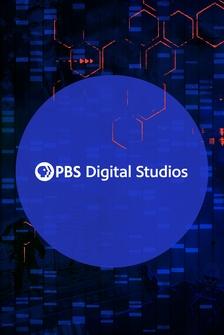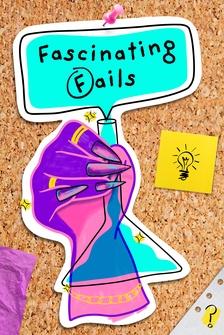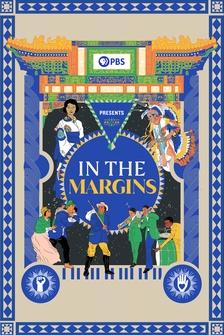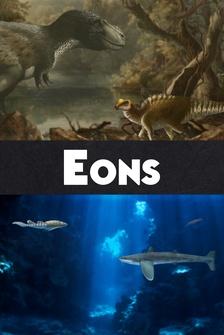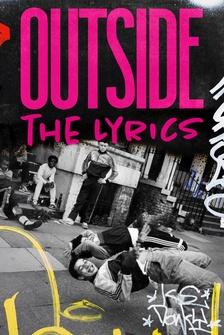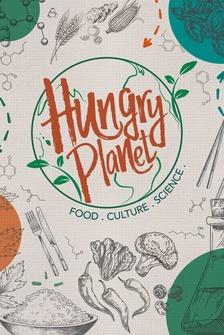Around the US drinking water comes from rivers, reservoirs, underground aquifers and the toilet.
Yeah, we've gotten so good at cleaning water that in some places you can take the dirtiest water you can possibly think of and make it a refreshing drink again.
So how?
Le ding.
If I can summarize a really bad situation here, in a lot of places we're running out of clean, accessible water for people who need it.
Some reports predict that in the next 50 years, the US fresh water supply could be reduced by a third, and there's not just a lot of places to go out and get it from.
Out of all of the water on earth, only a little bit of it is fresh water, just 3%, and most of that is inaccessible.
Either frozen in polar ice caps or way underground.
So when we drink water or shower in it and then just flush it away, in a lot of places we are throwing away perfectly good water that we need if only we could clean it.
In fact, only seven to 8% of waste water in the United States is reused.
So now some places have started to super clean the water that we flush down the drain so that it can be reused, not just for stuff like watering plants, but also for drinking.
Typically, we clean water that we intend to drink called potable water for two reasons.
To make it taste good and to take out stuff that could make us sick, and there's lots of stuff you want to take out of water before you drink it.
Bacteria, heavy metals, chemicals, viruses, even just plain old dirt.
Drinking contaminated water can make you really sick.
Things like typhoid, cholera and polio are all transmitted by dirty water.
Here in the United States, the EPA actually regulates 90 different contaminants in drinking water, setting safe standards for each one.
Things like cryptosporidium, legionella, bromate and that's not all of them.
Now for a long time in human history, before we knew that bacteria in our water could make us sick, we just cleaned water to make it taste better before we drank it.
So as far back as 2000 to 1500 BCE, Indian and Greek writers talked about straining water to get the dirt out.
Sanskrit and Greek writings of a similar time both mention heating water either by boiling it or setting it out in the hot sun or inserting a hot metal rod in it.
You can also coagulate all the junk in water together to make it drop out, and people have been doing this as far back as ancient Egypt using alum.
Alum or aluminum sulfate coagulates stuff together because it forms positively charged ions in water.
Negatively charged dirt molecules would typically repel each other but when alum is present, the dirt grabs onto the positive ions, neutralizing their charges and allowing them to clump and fall down to the bottom of a tank of water.
In the 1700s, scientists started to explore the adsorbing powers of activated carbon and that is adsorbing not absorbing.
Activated carbon or charcoal is the same stuff you find in your standard fridge water filter or a fish aquarium filter.
It's typically made by burning something carbon rich like wood at really high temperatures and then exposing it to some sort of chemical treatment or to oxygen to make it more porous.
Those pores give it a really high surface area, usually between 300 and 2,000 meters squared per gram.
That's 10 tennis quarts of area inside a single gram of charcoal.
That huge surface area means lots of binding sites for impurities that get stuck in the pores.
Things like volatile organic compounds and chlorine, which can just make your water taste bad or things like diesel fuel and medications that can make you sick.
It doesn't necessarily have to be as scientifically packaged as a fridge water filter.
Stuff like this, which is literally just a chunk of charcoal in a pitcher will also work.
It really can pull out stuff that can make your water taste kind of stale or chloriney.
Straining coagulation and carbon filtering can all make water both taste and look better, but they can still leave behind bacteria and viruses that can make you sick.
It wasn't until the late 1800s during an outbreak of typhoid in Maidstone, Kent, when people first started exploring the idea of adding a little bit of bleach into the water supply to try and sterilize it.
A cutting edge paper of the time from 1894 had suggested that adding bleach to water could make it germ free and it was right.
Typhoid deaths dropped dramatically and adding chlorine bleach to water started to save lives across the world.
When bleach, typically sodium hypochlorite, dissolves in water you get hypochlorous acid.
This acid disrupts the lipid membranes in bacteria and some viruses.
Sodium chlorite in water can also produce hydrogen atoms and hypochlorite, which can denature proteins throughout the cell.
Like all of the other contaminants that the EPA monitors, there's a top limit to how much lingering chlorine from the broken down bleach you can leave in the water, usually around four milligrams per liter.
Too little to hurt us, but enough to punch some holes right through bacterial membranes.
Now all of that is stuff that we do to clean water before it comes into our homes.
But when we want to clean the water that leaves our homes, we can do some similar processes by sending it to wastewater treatment plants.
Today in the United States, there are more than 16,000 wastewater plants in the country.
Most have two stages of cleaning, primary and secondary.
First, water goes through preliminary treatment, which screens out things like branches and plastic bottles.
And then it goes to primary settling chambers where heavy objects like gravel and biosolids, and yes, that's poop, can settle out.
Wastewater treatment plants often also add benign chemicals like organic polymers or ferric chloride to the water to help coagulation and settling during this stage.
Secondary cleaning takes care of small organic matter in the wastewater using bacteria.
Think dissolved fats, and lipids and sugars that come from your kitchen or your bathroom.
The wastewater plant mixes bacteria and air into the water and the bacteria eat up all of that organic junk.
This is just like what would happen to water in a lake, pond or other wetland.
Wastewater plants just help speed up the process in a controlled environment.
If headed back to fresh water, the remaining liquid is usually disinfected with something like chlorine to get rid of any remaining bacteria that escaped the secondary treatment step.
This system makes water that's pretty clean and safe to return to the environment, but if we want to make it clean enough to drink, there's some other things that we need to filter out first.
Things like medications and microplastics, and there's some other new innovations that can help to make the water that we filter taste better and be better for the environment too.
First, while chlorine can be super safe and effective for cleaning water, water treatment plants usually have to remove any excess chlorine before that water can be released back out into the environment.
This is because chlorine and its products are toxic to lots of aquatic and marine organisms.
So some places are turning to peracetic acid.
Peracetic acid has the same bacteria punching abilities of chlorine, but when it breaks down in water, it turns into just acetic acid, or vinegar, and hydrogen peroxide, which can break down further in water to be just water and oxygen.
You can release the resulting clean water into a stream or waterway without having to worry about deactivating any excess chlorine first.
Second, our water also contains a contaminant we haven't talked about at all yet, microplastics.
When plastic breaks down tiny pieces of it wind up literally everywhere in our environment, including our wastewater and our waterways, and according to a couple of recent new studies also in our blood and lungs.
Awesome.
Microplastics can be hard to remove from wastewater because they're so small.
Some wastewater plants do have filters designed to trap them, and don't just imagine these as screens.
Some of them also look like these adorable fuzzy balls.
Other microplastics get pulled down by normal coagulation processes like the alum that we talked about before.
But some of the most common coagulants, things like polyacrylamide, which can create a sticky gel, can break down into potentially harmful byproducts that are hard to remove and filter out from the water.
So scientists have been looking for alternatives.
One really cool recent paper suggests a delicious one, okra.
Yes, like the food.
You know how when you cook okra it can get a little bit slimy?
That slime is called mucilage and scientists wondered if this sticky sugar rich substance would help to trap water contaminants, and it turns out that it can.
The idea is that all of the slime grabs onto the microplastics and pulls them out of the water without leaving those potentially harmful molecules behind.
The study found that okra plus fenugreek extracts worked really well to remove microplastics from ocean water, while okra and tamarind pulled microplastics out of fresh water best.
Since all of the coagulating sugars themselves are food grade materials, any leftovers in the water supply will still be safe to drink or to flush out to the ocean.
Delicious.
Water that comes out of our homes can also include things like medications, either from people flushing or peeing drugs down the toilet.
People also tend to pour unused household chemicals like pesticides down the drain too.
So if you want to drink that water, you've got to get all of that stuff out of it.
Some water treatment plants have turned to micro-filtration followed by reverse osmosis to get those things out.
Yes, that is the same process described on the side of your overpriced water bottle.
Reverse osmosis works by using pressure to push water through a membrane that only allows water molecules through, leaving dissolved molecules, including those things like drugs and hormones behind.
A study on Los Angeles water treatment plants found that those that used reverse osmosis to help clean water removed two to three times more medication from the water supply than those that didn't.
By adding together combinations of these water technologies, water treatment plants in areas where water is scarce, say like the deserts of the American Southwest, are able to confidently clean household wastewater.
And yes, I mean water from your toilet, and then put it back into the drinking water supply.
Considering that Southern California alone sends as much as 830 million gallons of treated water per day just out into the ocean rather than back into a place where we can use it, that is a lot of valuable water that we're not taking advantage of.
Especially as we find ourselves in worse and worse droughts.
Though some people find the idea of drinking cleaned wastewater a little weird, but honestly, I thought for a really long time that's just what we did with wastewater.
Why would we clean water and then just dump it back into the river?
I thought we drank it.
In Orange County, California cleaned wastewater undergoes not just micro-filtration and reverse osmosis, but UV disinfection as well before going back into the drinking supply.
It filters into the environment around the San Gabriel River before making it back into deeper groundwater that's then added to the drinking supply.
This process is called indirect potable reuse.
El Paso, Texas in the middle of the desert with disappearing water sources, also reuses wastewater as direct potable reuse, which means that you can drink it right away after it's cleaned, rather than waiting for it to filter through the environment first.
It just makes sense to do this when you need water in the middle of the desert and more and more water strapped locations are looking to make the switch soon.
The barrier now isn't so much scientific as it is psychological.
We can make the water safe and clean, but some people still feel turned off by the idea of drinking toilet water.
Really, we just need a good rebrand.
Look, there are a lot of ideas out there for how to get over this from name changes for water programs to terrifying mascots like Singapore's Water Wally and Phoenix's Wayne Drop and Lou Poo.
Yes, these are real, but in the end, it's all chemistry.
Once you've cleaned it, the water is the same H20 no matter if it comes from a lake or your own bathroom.




